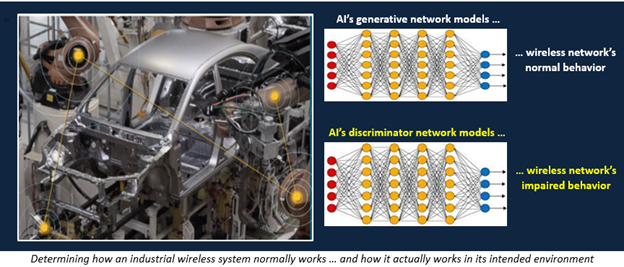
Wireless communications can enable Cyber-Physical Systems (CPS) and Internet of Things (IoT) systems that give industry greater flexibility in setting up and reconfiguring manufacturing systems, compared to today’s wired systems. However, realizing that potential depends on measuring a wireless network’s reliability and latency to ensure that a CPS meets industrial requirements.
To meet this need, NIST’s Industrial Wireless Systems team has developed an artificial intelligence (deep learning) framework to measure a network’s performance against the required operational performance. NIST researchers describe the framework in Industrial Wireless Cyberphysical Systems Performance Using Deep Learning, which was presented by NIST’s Mohamed Kashef (Hany) at Manufacturing Science and Engineering Conference (MSEC 2023).
The NIST team used the framework to evaluate a wireless network’s performance in a tesbed in which a leader and follower robot wirelessly coordinate the lifting and movement of an object. The framework uses a “Generative Adversarial Network,” which consists of two “dueling” networks. Both were provided respective performance data and were used as follows:
- The “generative” network modeled the normal behavior of the robots with no interference impairing the wireless connection between them.
- The “discriminator” network measured the impairments to the robots’ wireless connection and thus the deviation from their normal behavior.
The framework’s results can provide insights into the state of wireless communications within a given use case. The framework can also help determine when a CPS is not following the statistical behavior of its normal operations.
NIST researchers view the deep learning framework as an initial prototype for studying the performance of an industrial wireless system. The team plans to identify and characterize industrial wireless systems by assessing various operational, network, and spectrum parameters.

